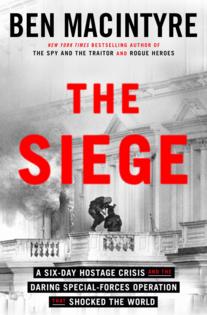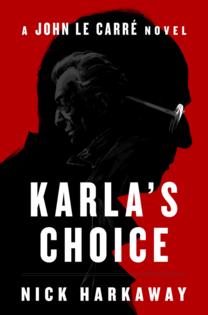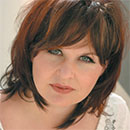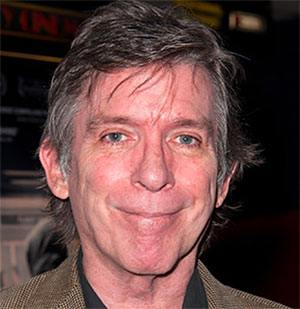Hungry for a book about spies? We've got six for you
Published in Books News
These autumn months are a good time for the reader who comes in from the cold. There’s a new book about spies hitting shelves just about every week, including a sequel to “The Spy Who Came in From the Cold” called “Karla’s Choice.”
There’s something for just about every taste but, with so many spooks to choose from, it can be tricky to decide which group of double-crossers is for you. So we’re here to help. Here are six of this fall’s cloak-and-dagger books, each with a different focus:
Spies with romance ...
The Secret War of Julia Child, Diana R. Chambers
Cooking legend Julia Child did work for the Office of Strategic Services, the precursor to the CIA, during World War II and that is where she met her future husband, Paul. Both of these events are depicted in Chambers’ novel, which invents much of the rest, based on the writer’s hunch that Child protested too much when she claimed that all she did during the war was dictation and filing. “Secret War” sends Child, who loves to eat but doesn’t yet know how to cook, on a series of missions in the Far East, where she takes an instant dislike to Paul and makes friends with other Americans doing their best to defeat the Japanese. Fans of romance novels will spot the makings of an enemies-to-lovers tale and, indeed, “Secret War” would more logically be shelved in the “romance” section than the “thriller” one. To whet our appetites, when Julia and Paul are not stuck in a mess tent, the sweet, slightly old-fashioned romance is fueled by lots of spicy, delicious-sounding food.
Classic skulduggery ...
Karla’s Choice, Nick Harkaway
You’d be right to be skeptical of “Karla’s Choice,” which continues the story of the late John le Carré’s most popular character, George Smiley, but which was written by le Carré’s son, Harkaway. History offers plenty of proof that writing talent can skip many generations and, indeed, Harkaway is not the crisp stylist that his father was. On the other hand, nobody is. If you’re already a Smiley fan based on “Tinker Tailor Soldier Spy” and “Smiley’s People,” I bet you’ll go for “Karla’s Choice,” the events of which take place between le Carré’s “The Spy Who Came in From the Cold” and “Tinker.” Harkaway clearly understands sad, dedicated Smiley (in an author’s note, he says he basically grew up with him). That’s most evident in a spectacular scene in which Smiley, retired from the spy game but forced to return for the proverbial one last mission, walks from his home to his office, feeling increasingly hobbled by all the weight he had cast off his shoulders. As Harkaway writes, the world around Smiley shifts from “clear and kind to desperate and cold.”
Real-life spy tales ...
The Siege, Ben Macintyre
Macintyre fans may miss the World War II spy games that the “Operation Mincemeat” author usually chronicles, but his minute-by-minute account of the 1980 takeover of London’s Iranian embassy is riveting. The hostage siege is not as well-known in this country as the Iran hostage crisis that was happening at the same time in Tehran, but that works in the book’s favor since the details are not as familiar. And Macintyre knows so many stunning details: that legendary journalist Rebecca West just happened to live nearby, with a view from her window of much of the action; that, during the standoff, police were stationed a couple doors from the embassy in a needlepoint school; that one of the 26 hostages happened to be a spy. And that the terrorists somehow missed the fact that another one of the hostages was armed. Good luck putting this one down.
World War II ...
Book and Dagger, Elyse Graham
This book could just as easily have been titled “Nerds Won World War II.” Graham looks back at the wide-ranging group of academics and librarians enlisted to help fight the Great War, the idea being that their bookish instincts — attention to detail, an unassuming quality that enabled them to vanish into crowds, a high threshold of boredom — lined up with espionage. Graham’s organization is a bit scattershot, with tons of people to keep track of, but she finds many pointed, entertaining details. For instance: Women made great spies in the ‘40s because they were used to being ignored and because they could extract intel by deliberately saying something inaccurate, knowing a mansplainer with top-secret information couldn’t help himself from correcting her. Another provocative idea is that the Allies won the war because Hitler despised intellectuals, but we valued them. One qualm with “Book”: Although Graham always identifies them, there are many, many passages where, with no historical record to rely on, she simply invents conversations and incidents, shifting the book from the “history” it is labeled to fiction.
Literary spies ...
Creation Lake, Rachel Kushner
The headiest book on this list, the novel set in rural France was shortlisted for the Booker Prize and longlisted for the National Book Award. Its main character — she’s going by Sadie Smith, but we don’t know her real name — is, in fact, a spy who works for shadowy corporate overlords. She’s infiltrating a group of environmental activists who are planning a major act of destruction. That makes the book sound more plot-driven than it is. A lot of it takes place in Sadie’s head as she ponders literature created by a guru named Bruno, whose study of the Neanderthals who once populated France contains lessons that Sadie should be heeding but often misses. The first-person narration Kushner created for Sadie is witty, as when she finds a YouTube video of a tedious novelist who’s one of her sources: “The video was from one of those talk shows they have only in France, where people think writers are interesting.”
Middle-school spies …
Spy School Goes Wild, Stuart Gibbs
This is the 12th book in the “Spy School” series, but don’t worry: It’s genial fun even if you haven’t read its predecessors (I hadn’t). A little bit like “Harry Potter,” minus the magic wands, and a little like “A Series of Unfortunate Events” but not as dark, “Spy School Goes Wild” finds adolescent Ben Ripley sent on a mission to Botswana. Which would be cool except that he’s accompanied by his nemesis, Murray Hill, who takes advantage of every opportunity to double-cross Ben. Gibbs’ book, intended for middle school audiences, is breezy and funny (principals are the butt of many jokes), with the unexpected bonus of survival tips like this one: Fresh elephant dung can be squeezed to produce an emergency, albeit disgusting, source of water.
©2024 The Minnesota Star Tribune. Visit at startribune.com. Distributed by Tribune Content Agency, LLC.
















Comments